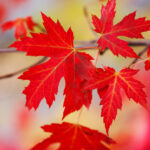Buckeyes and horse chestnuts, Aesculus genus, are generally small to medium-sized deciduous trees or large shrubs.
Buckeyes and horse chestnuts have large, erect clusters of spring flowers in white, pink, or red. Some have good yellow fall color. All produce shiny, polished fruits encased in spiny, leathery, covering. The fruits are poisonous.
Buckeyes and horse chestnuts are fairly rapid growers; most of the more than 20 species are hardy.

Get to Know Buckeye and Horse Chestnut
- Plant type: Deciduous tree
- Growing Zones and range: 3-8 depending on the variety
- Hardiness: Cold hardy
- Height and spread: To 40 feet tall and wide depending on the variety
- Foliage: Canoe-shaped leaves with lance-shaped tips, coarse, forward hooked teeth; leaves are dull green rather than shiny or waxy gloss.
- Flowers: Tall spikes of white or yellow flowers depending on the variety
- Bloom time: Spring
- Uses: Shade tree, street tree, and specimen tree
- Common name: Buckeye and Chestnut
- Botanical name: Aesculus spp.
- Family: Hippocastanaceae
- Origin: S.E. Europe, E. Asia, North America
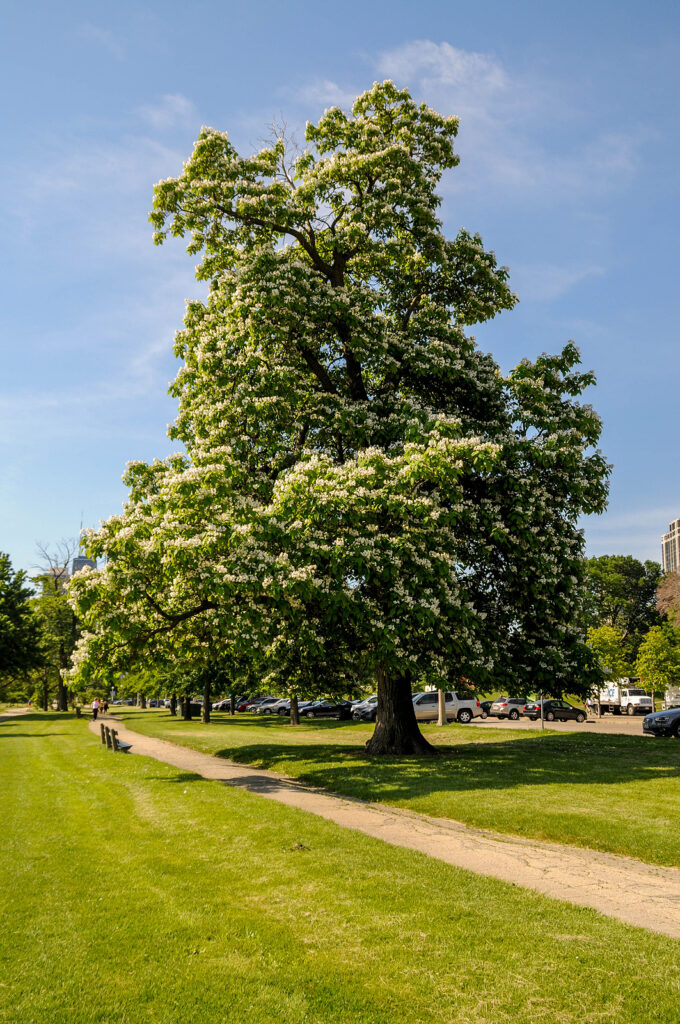
Where to Plant Buckeye and Horse Chestnut
- Plant buckeye and horse chestnut trees in full sun.
- Horse chestnuts and buckeyes are tolerant of a variety of soil conditions.
When to Plant Buckeye and Horse Chestnut
- Transplant balled-and-burlapped plants in fall or spring. Keep transplanted trees well-watered until established.
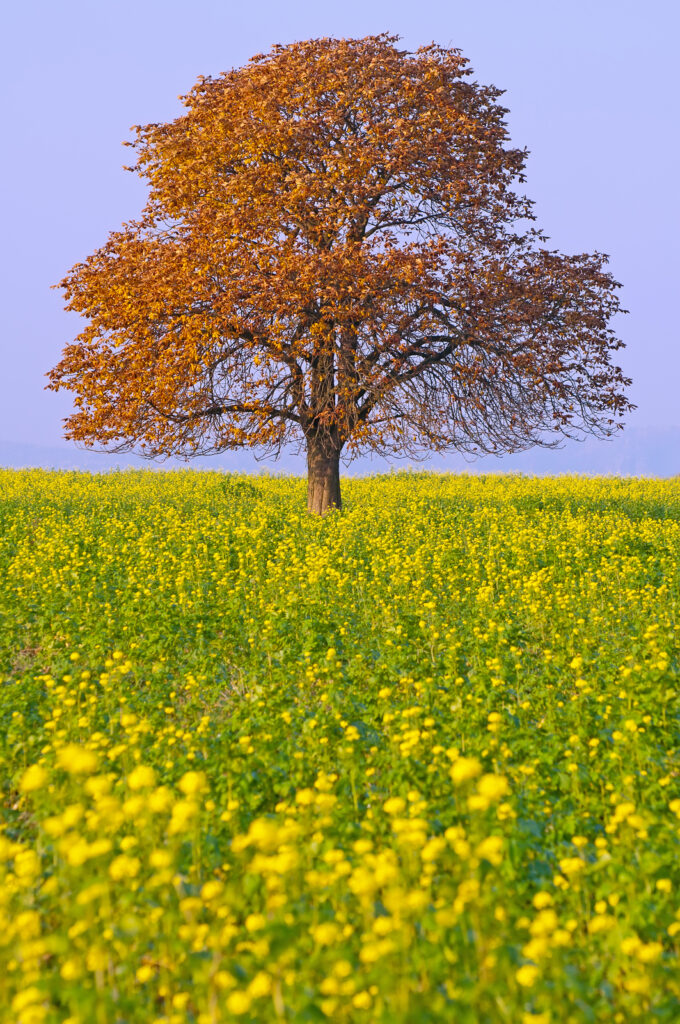
Planting and Spacing Buckeye and Horse Chestnut
- Space trees with mature spread in mind.
How to Water and Feed Buckeye and Horse Chestnut
- Water buckeyes and horse chestnuts deeply to establish deep roots.
- Irrigate trees in very dry seasons to avoid leaf browning.
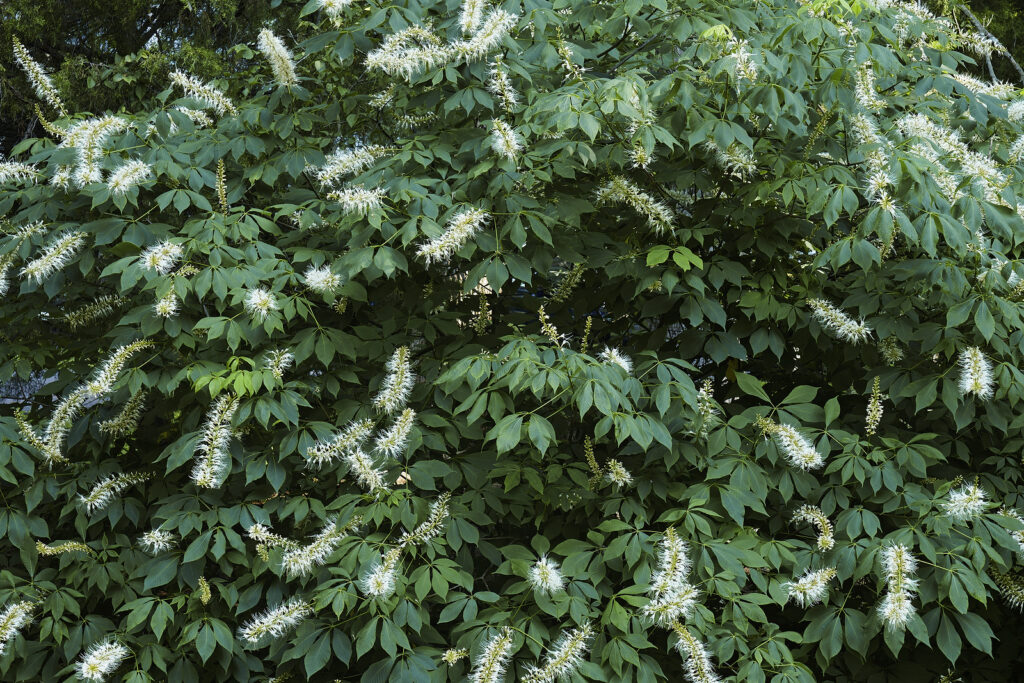
Buckeye and Horse Chestnut Care
- Buckeyes and horse chestnuts commonly need no pruning.
- Older shrubby species may be thinned in late winter by cutting the oldest stems down abut 6 inches (15cm) from the ground.
Buckeye and Horse Chestnut Common Problems
- Clean up leaves to keep pest insects of diseases from overwintering.
- Scale insects may cause unsightly but harmless white patches.
- The genus is susceptible to honey fungus and witches’ broom and is sometimes seen on older trees.
Buckeye and Horse Chestnut Propagation
- Sow seed of species in spring.
- Take cuttings in winter.
- Hybrids and cultivars are propagated by budding or top-grafting.
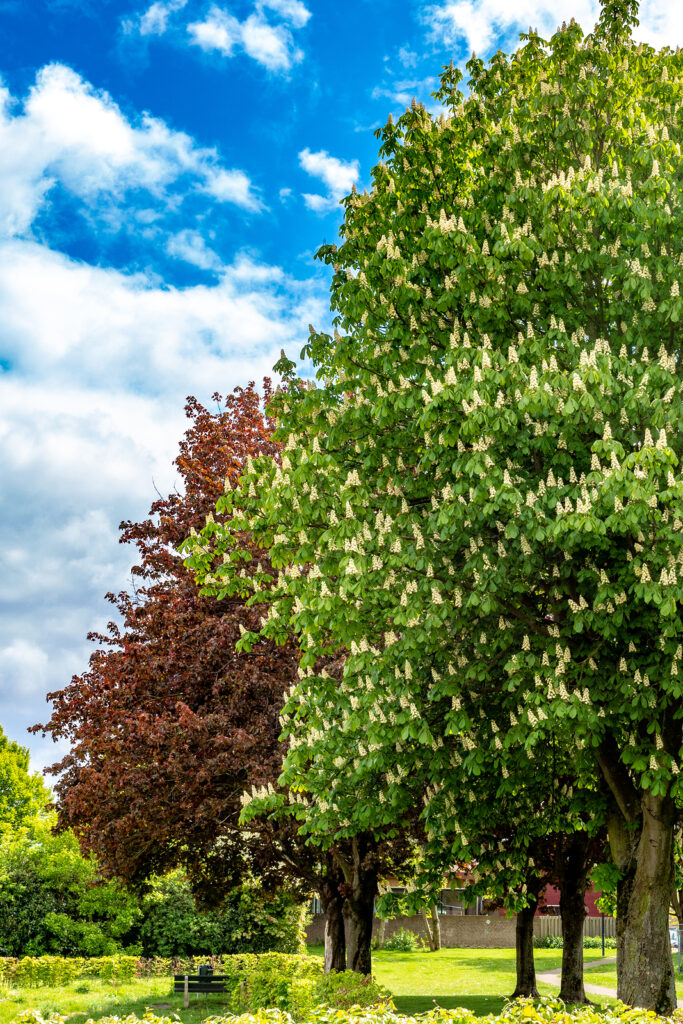
Buckeye and Horse Chestnut Varieties to Grow
- Aesculus californica, California buckeye: Shrub or small tree grows to 20 feet tall and as wide; fragrant cream-colored flowers; rich green leaves with five to seven leaflets drought tolerant.
- Aesculus x carnea, red horse chestnut: Zones 3-8; to 40 feet (12m) tall and wide; rounded form; deep red flowers in upright clusters in spring followed by spiny fruit.
- Aesculus glabra, Ohio buckeye: Zones 3-7; 20’ to 50’ tall and wide; low branches, broad rounded form; dense canopy; large yellow-green flowers in summer; plant in deep, well-drained soil; shade tree in large open areas.
- Aesculus hippocastanum, common hose chestnut: Zones 3-8; 40 feet (12m) tall and wide; rounded form; spikes of white flowers above coarse-textured leaves in late spring; plant in open areas, shade tree.
- Aesculus parviflora, bottlebrush buckeye: Zones 5-8; 10’ tall, 15’ wide; large rounded shrub; 1-foot fragrant white flower spikes; leaves turn yellow in fall; several cultivars.
- Aesculus pavia, red buckeye: Shrub grows to 20 feet tall; erect clusters of bright red or orange-red flowers.














